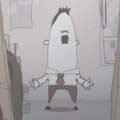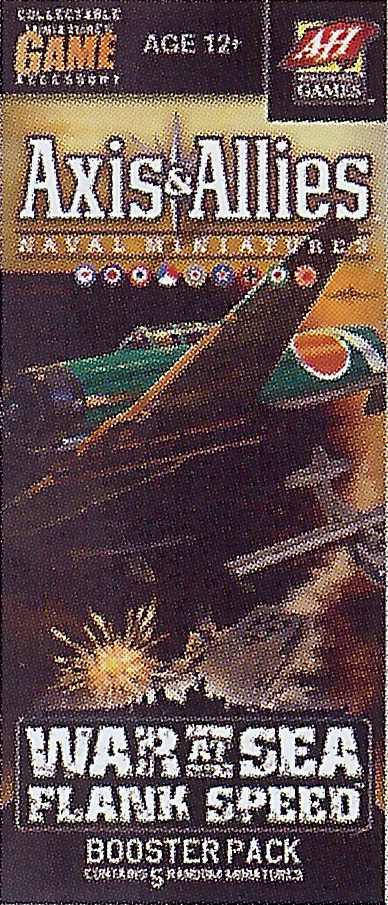 The number one thing I’m contacted about by blog visitors is my War at Sea Stat Card Galleries. The enthusiasm from visitors is always high, their appreciation sincere, and their inquisitiveness on when more will be shared pervasive.
The number one thing I’m contacted about by blog visitors is my War at Sea Stat Card Galleries. The enthusiasm from visitors is always high, their appreciation sincere, and their inquisitiveness on when more will be shared pervasive.
This article is titled War at Sea: Stat Cards Gallery Update but it is more an open letter and response to everyone who has privately contacted me about the galleries. I am thrilled and excited to receive e-mails from the plethora of visitors on this subject. Far too often bloggers operate in a vacuum subject to the whims of their internal monologue and those who post comments. Without comments the blogger doesn’t know if people are reading the posts and what their thoughts are. As important as it is for the blogger to post new content it is equally, if not more, important for readers to post comments.
Leaving a comment is very easy to do. At the bottom of the post is an empty box. Once you signed in (because you REGISTERED your FREE blog account) type your remarks in that empty box and click the SUBMIT COMMENT button. You’re done.
That said I do have actual progress to announce. I spent three hours tonight scanning in stat cards and making them available in the War at Sea: Picture Card Gallery comprised of the Base Set stat cards. The process is time consuming and painstaking so I believe readers will be interested in how the cards are scanned and made available on the blog.
- All my stat cards are kept in a binder (nine to a page) and I try to scan them in groups completing one page at a time. It is easier to remember where I left off and where I need to continue. I own duplicates of almost every single miniature (and card) for each of the sets. I go through each of my cards looking for the one in the best condition. This can take as long as a minute per model to identify the best card.
- After I have three cards I lay them out on my scanner with space between them. I scan the cards three at a time at 600dpi into a computer. This provides a clear and clean high resolution scan without spending too much time scanning. It takes 30 seconds to scan three cards at 600dpi. I save the scan of all three cards as a single jpg. I will work with this in the next step. When one group of three is complete I do the next one until I have completed nine cards.
- I open each scan, in turn, using Adobe Photoshop. I crop the image so I work on one card at a time. I resize the image, maintain its high resolution, and then save it as a jpg. I back up the steps to the main scan and work on the next card. When I’ve completed each step for each card I close the file and open the next scan.
- After all nine cards have been processed in Photoshop I open a FTP program. I’m fond of Fetch and Cyberduck on the Mac or SmartFTP on Windows. I upload the individual card to the appropriate folder on my server.
- I update the zip file with the latest additions and upload that to my server. Uploading each card, the zip file, and original three card scans can take up to 20 minutes due to their large size (usually 8-12MB).
- In the case of the Base Set scans I go to War at Sea: Picture Card Gallery and edit the article. I upload each of the cards into WordPress’ gallery for the particular article. I sort them into the appropriate order based on their set number. After saving my edits I verify that everything looks appropriate in the article. I check each new card to ensure it looks crisp.
All told the entire process takes a very long time. Tonight I added three pages of cards (or roughly 24 cards) and it took me two hours from start to finish. This project is very time consuming but tonight I completed all the scans for the Allies. Originally I finished the United Kingdom and did a few scans for the United States. I left a comment on War at Sea: Picture Card Gallery and War at Sea Task Force Picture Gallery stating my intention to complete the Allies by the end of the month. Instead I pushed forward and completed them tonight.
You have patiently waited a long time for the scans and I am happy to give you this late Christmas gift. While working on the project I have also made a decision that will impact how the project continues. Originally I planned to scan the fronts and backs of all stat cards from the Base Set and Task Force. I have since changed my mind and will only scan the front of the cards. I have decided that the purpose of scanning the cards is to offer gamers a preview of what they will get when they purchase the starter and booster boxes for each set. It allows gamers to determine if a particular set is worth their expenditure of time and money. In the current fiscal climate people have to be wiser than ever before on how they spend their money. It may be difficult to choose what games to purchase and how much to spend on a game. It is my hope that these scans, along with our extensive War at Sea coverage, will help gamers make informed choices.
There is another reason to not scanning the backs of the cards. If we scan and make the backs of the cards available there is no reason for gamers to purchase War at Sea. They could print out the scans making their own cards with some cardboard. Instead of the beautiful miniatures they could use pieces of paper or tokens. I’m not opposed to trying a game before buying it but if gamers completely skirt purchasing the games they play then the companies who make them will be unable to afford manufacturing those very games.
It is important for gamers to support the stores they play in and the games they play by purchasing those games in their local gaming stores. Gamers may think twice about buying War at Sea if they can print out the complete stat cards. As an avid War at Sea gamer I want Richard Baker to come out with the 5+ sets he has planned. That means we need to buy the product to play with.
This leads me to the conclusion of this open letter. The entire blog and all the stat card scans come with a terms of service or user agreement. There is no cost to using the blog, the scans, or anything you find on the blog. The only requirement is that you adhere to the Creative Commons Attribution-Noncommercial-Share Alike 3.0 Unported License covering the blog and everything on it (including the scans). In addition to the terms cited in the license it means that if you use anything you see on the blog, like the scans, that you need to provide a link back to the blog on the website(s) you put the scans on. Or, if you print them out and show them to friends you need to tell your friends about us and how to get to us.
It is a simple thing that grows the hobby, keeps us operating, and let’s us know what you want to discuss. As always I am grateful for your time and appreciate your reading the blog.
Thanks,
Jonathan




